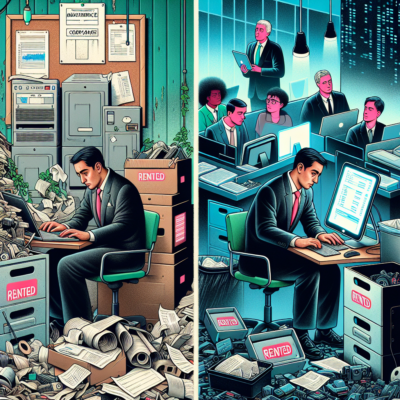
The Hidden Costs of Owning IT Infrastructure: Why Renting Makes Financial Sense
Introduction
Due to the rapid growth and dynamic nature of businesses, managing IT infrastructure has become a complex task. Many businesses prefer buying IT infrastructure on the pretext that it is cost-effective. However, people do not understand that they incur hidden costs in their investment, leading to losses. This piece will discuss some of the hidden costs of IT that make renting a better financial option:
The Hidden Costs
Hardware and Software Maintenance
Businesses often overlook the ongoing maintenance required to keep hardware and software in optimal condition. Regular updates, patches, and troubleshooting can accumulate substantial costs over time.
Security and Compliance
Ensuring that systems adhere to security standards and regulatory compliance requires continuous investments in security measures and audits, which can be financially draining.
Upgrades and Updates
Technology evolves rapidly, necessitating frequent upgrades and updates to maintain efficiency and competitiveness. These updates can be expensive and time-consuming.
Disposal and Recycling
When IT equipment becomes obsolete, businesses must handle its disposal and recycling responsibly, incurring additional costs and logistical challenges.
Training and Support
Staff requires regular training to stay updated with the latest technology, and technical support is needed to resolve any issues. Both involve significant investment in both time and resources.
Why Renting Makes Financial Sense
Reduced Capital Expenditure
Renting eliminates the need for large upfront investments, allowing businesses to allocate their capital more effectively across other operational areas.
Access to Latest Technology
Rental agreements often provide access to the latest technology, ensuring businesses stay ahead without the need for constant, costly upgrades.
Scalability and Flexibility
Renting offers the flexibility to scale infrastructure up or down based on business needs, providing a level of adaptability that ownership cannot match.
No Maintenance and Support Burden
Rental agreements usually include maintenance and support services, reducing the burden on internal IT teams and ensuring systems are always functional and up-to-date.
Environmental Benefits
By renting IT infrastructure, businesses contribute to environmental sustainability as rental providers manage the end-of-life recycling and disposal of equipment more efficiently.
Conclusion
In conclusion, owning IT infrastructure involves hidden costs that may ruin a business financially. Alternatively, renting IT infrastructure offers numerous benefits that cut costs, save time, and increase competitiveness. Therefore, it is important to be knowledgeable about the hidden costs of owning IT infrastructure. Similarly, one should know about the perverse effects that accompany it concerning renting to make a viable investment decision that aligns with one’s goals.